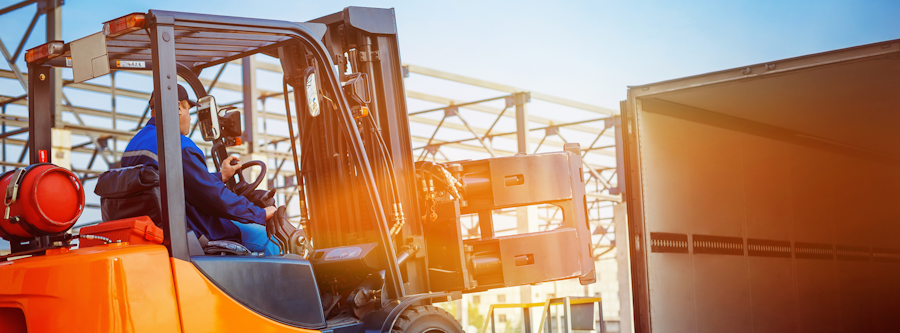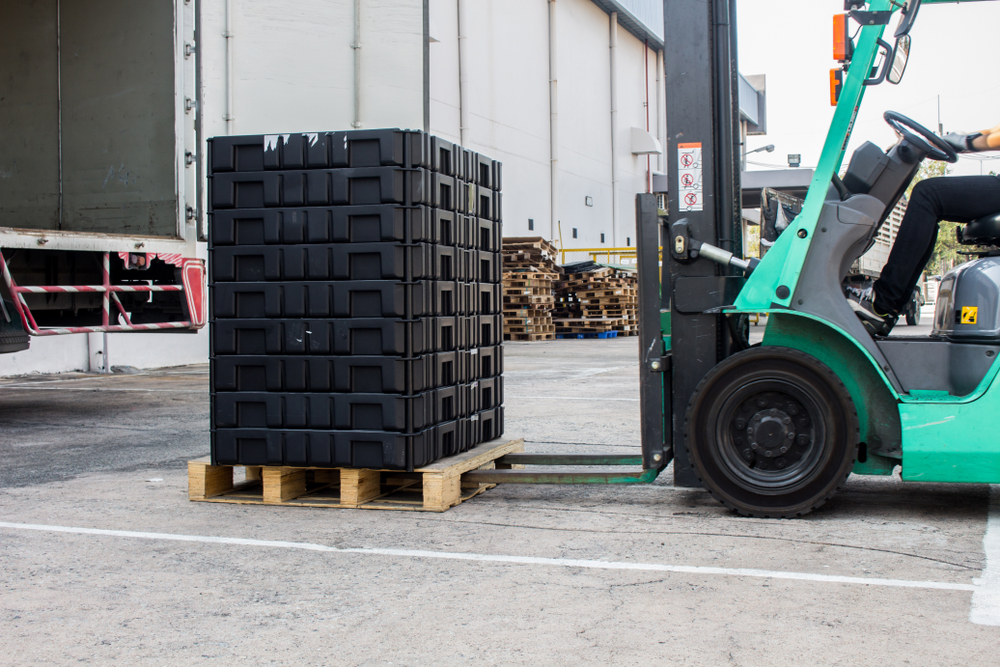News
5 Common Warehouse Accidents & 5 Ways To Prevent Them

Workplace accidents can happen no matter where you work. Whether you work on a building site, in an office or even sell ice cream, there are hazards that need to be avoided. In material handling and warehouse logistics, there are a number of unique hazards.
Warehouse safety goes hand in hand with productivity. Lost workforce hours, damaged stock and machine repairs all eat away at your bottom line, so taking a serious approach to safety means much more than just making sure you're compliant.
Common Warehouse Hazards
Forklifts
Forklift accidents are some of the most serious types of accidents in warehouses. Forklift accidents are among the most serious warehouse accidents, due to the sheer size of the vehicle and the fact that it operates in such close proximity to workers on foot. One simple mistake can be very dangerous. Drivers often become very comfortable using forklifts, which in some cases can lead to carelessness.
Forklift accidents come in two basic kinds: driving into something, or mishandling materials. In the first instance, you're looking at a damaged forklift or damaged racking. At worst, you've hit a person, which will, of course, cause serious problems. Mishandling materials are usually the result of overstacking a forklift. This results in damaged stock, high wastage and a mobile hazard that could tip over at any moment in any place, endangering the driver and anyone else around the forklift.
To reduce the chances of accidents occurring, only trained employees should use forklifts. Some employees may think they know how to use a forklift, but if they are not trained, they should not use them. For those operators that have received training, you should enroll them on refresher courses on a regular basis to avoid complacency and bad habits.
Slips and trips
Liquids can get spilled in warehouses, gravel can end up on the floor, debris can create risks, and things like boxes and pallets can get left in the wrong place. All of these can increase the risk of slips occurring. This is one of the most common accidents, but also one of the easiest to avoid.
Make sure you have clear procedures for where things go and what employees should do when locating or causing a spillage or similar hazard. Also, make sure that all staff is appropriately attired, including wearing shoes with good grip. Floor tape can be used to identify potential hazards while ensuring good lighting improves visibility.
Manual handling
Injuries resulting from people attempting to lift heavy objects are the most common type of accident across all injuries after slips and trips. Injuries of this type can occur suddenly, or they may occur over a period of time. Injuries of this nature can be disabling, as they can cause damage to backs, shoulders, and feet.
Lower back pain is one of the most common warehouse injuries. Manual material handling, such as order picking and pallet handling, leaves employees prone to injuries. It is estimated that back and shoulder pain makes up approximately 40 to 50% of all claims filed by warehouse workers. The risk is elevated when a person handles loads that are too heavy. You can easily adjust your warehouse in order to minimize such tasks. Provide correct training so that employees lift items without risking injury. Never make employees lift anything that is too heavy, and ensure correct footwear is used to avoid slips while lifting.
Fire
Fire is one of the most serious threats to warehouse safety. Clearly marked fire exits, fire extinguishers and training are required in workplaces for a reason – to minimize the danger of fire. To prevent this major hazard, avoid exposed wires and if necessary cover them with suitable non-flammable materials. Pay attention to any leakages, unidentified spills, and gasses that can catch fire. If you do notice something, shut down the area immediately and report the problem to the warehouse manager, fire officer or safety officer.
Falling objects
As warehouses continue to strive to optimize floor space, racks are getting taller. As racks get higher, the risk of falling objects increases. The material must be fully secured, especially at higher elevations and should be transported using stacker trucks or other appropriate tools. Secure racking keeps stock from being damaged and protects those underneath it.
Avoiding Warehouse Accidents
Understand the laws and compliance
Safety and security in the workplace are governed by three main pieces of legislation:
- Health and Safety at Work Act 1974
- Workplace Health and Safety Regulations 1992
- Management of Health and Safety at Work Regulations 1999
Each of these regulations details exactly how to maintain a safe working environment for everyone.
Safety handbooks
Safety policies and guidelines should be made available to all members of staff. Having a handbook readily available will keep the safety guidelines at the forefront of people's mind and give them a reference point should they need it. Written policies also cover both employer and employee against accidents, claims, and responsibilities.
Use the right tools for the job
Using incorrect tooling for any job presents a significant chance of injury. It is essential that anyone completing a job has the correct tool at hand and follows the correct procedure for use.
Signs
Clear signage should be provided around the warehouse that indicates potential hazards, correct PPE (Personal Protective Equipment) for all hazardous areas and what action should be taken following an accident.
Floor markings
Floor marking using colored tape can be useful in keeping walkways clear, and to keep workers with the wrong PPE from entering an unsafe area unknowingly. Taped areas can also help production in busy factories by marking specific waiting areas for part queues.
Warehouse safety is an issue that affects all stakeholders, from board members to forklift operators. It is essential to the happiness and productivity of your workers and has a real impact on your bottom line.
Get the right tools for the job by ordering a secondhand forklift truck. We have an extensive stock of forklifts that are suitable for a wide range of situations, from side loaders to reach trucks and much more.


Subscribe
Keep up to date with PHL and all things forklift machinery.